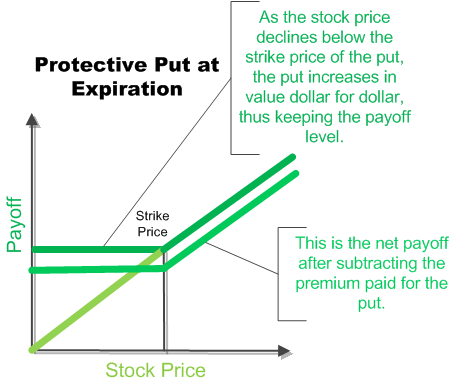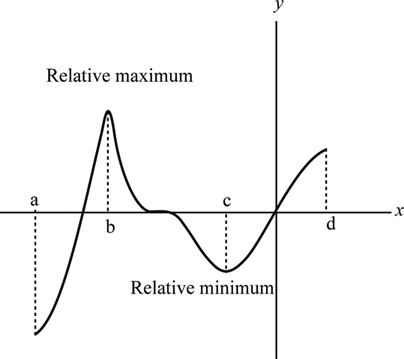Contents:


This approach is income statement oriented in that it is designed to match the main expense of extending credit with the revenue produced by that activity. Most accountants take the position that the expense is incurred in order to increase sales and, therefore, should be reported in the same time period as those sales if cause and effect are to be related. Less than $5,000may be approved by the senior director of sponsored financial services. Units are expected to include accounts receivable write-offs as part of the internal control initiative and include the unit-specific process and materiality threshold. If you find a job, inherit money or win the lottery, your creditor might sue you to try to get money from you. If your creditor succeeds in getting a judgment against you, it will be able to garnish your accounts or income, or seize your assets.
The aging of receivables method and the percentage of credit sales method are the most commonly used methods. The aging of receivables method maybe the more accurate, but the percentage of credit sales method is simpler to implement. First, the bad debt expense is added back to the net income to arrive at the cash flow from operating activities. The bad debt expense is only a provision for future bad debts, and it does not impact cash flows directly. The Allowance for Doubtful Accounts is a contra-asset account that estimates the future losses incurred from uncollectible accounts receivable (A/R).
We do this by accepting that there will be some defaults and consider some defaults an expense of doing business. Since we do not know which customers will default, we set aside some of the receivables as an allowance for defaults . This allowance or is used to write off accounts receivables in the future when a default happens. Bad debt expense is an income statement account that records the amount of money written off as uncollectible.
I Am A Bearish Bull On Zynex; It’s Complicated (NASDAQ:ZYXI) – Seeking Alpha
I Am A Bearish Bull On Zynex; It’s Complicated (NASDAQ:ZYXI).
Posted: Fri, 12 Jul 2019 07:00:00 GMT [source]
In these situations, we first reverse the write-off journal entries we did at the time of the write-off to activate the receivable. A debt is closely related to your trade or business if your primary motive for incurring the debt is business related. You can deduct it on Schedule C , Profit or Loss From Business or on your applicable business income tax return. The most prevalent approach — called the “percent of sales method” — uses a pre-determined percentage of total sales assumption to forecast the uncollectible credit sales. The actual payment behavior of customers, or lack thereof, can differ from management estimates, but management’s predictions should improve over time as more data is collected. The desired $6,000 ending credit balance in the Allowance for Doubtful Accounts serves as a “target” in making the adjustment.
Include in the backup a brief narrative of the reasons for the write-off, evidence of multiple collection attempts, and the account number that will fund the write off. When receivables or debt will not be paid, it will be written off, with the amounts credited to accounts receivable and debited to allowance for doubtful accounts. Sometimes, an account receivable account that was written off surprises and pays fully or partly the amounts due. An example can of a bankruptcy proceeding that was able to repay creditors all or part of their dues.
Are You Uncollectible?
The focus in this case is on the net realizable value of the receivables, and the income statement is relegated to second place. It can be claimed as an operating loss and can be subtracted from gross profits as a tax deduction. But if the books of accounts are maintained on a cash basis, bad debts cannot be claimed as a deduction, as all income is recognized only when received in cash. The balance sheet is an accurate and fair indicator of the company’s financial position on a given day at the end of the financial reporting period. The balance sheet of a company must be adjusted to reflect the impact of bad debts.
Why don’t we just wait for a default and then write off the receivable then? We recognize the revenues in the year of sale according to the accrual concept. So we also need to recognize the related costs, including the cost of defaults this year, according to the matching principle in accounting. This is why we cannot wait to know the default values to acknowledge the default and write off the receivable.
GAAP since the expense is recognized in a different period as when the revenue was earned. Most balance sheets report them separately by showing the gross A/R balance and then subtracting the allowance for doubtful accounts balance, resulting in the “Accounts Receivable, net” line item. In effect, the allowance for doubtful accounts leads to the A/R balance recorded on the balance sheet to reflect a value closer to reality. The allowance for doubtful accounts is then used to approximate the percentage of “uncollectible” accounts receivable (A/R).
How is Bad Debt Expense Different from an Allowance for Doubtful Debt?
Since accounts receivables are part of the normal operating cycle of the business, you will see accounts receivable-related items in the operating section of the cash flow statement. A business deducts its bad debts, in full or in part, from gross income when figuring its taxable income. For more information on methods of claiming business bad debts, refer to Publication 535, Business Expenses. The percentage-of-receivables method estimates uncollectible accounts by determining the estimated net realizable value of accounts receivable, so many accountants refer to this as the balance-sheet method. Recognizing bad and doubtful debts leads to an offsetting transaction in accounts receivables or debtors’ balances, and these heads are reduced by the actual amounts of uncollectible debts.

From the Invoice details page, click More and select Change invoice status. A debt becomes worthless when the surrounding facts and circumstances indicate there’s no reasonable expectation that the debt will be repaid. To show that a debt is worthless, you must establish that you’ve taken reasonable steps to collect the debt. It’s not necessary to go to court if you can show that a judgment from the court would be uncollectible.
Other Allowances
If the percentage rate is still valid, the company makes no change. However, if the situation has changed significantly, the company increases or decreases the percentage rate to reflect the changed condition. For example, in periods of recession and high unemployment, a firm may increase the percentage rate to reflect the customers’ decreased ability to pay. However, if the company adopts a more stringent credit policy, it may have to decrease the percentage rate because the company would expect fewer uncollectible accounts.
There is little practical difference between the direct and indirect approaches because they are just different ways to analyze exactly the same data. In effect, we act as if each age group is a different population of receivables with a unique percentage of uncollectible amounts. Again, this entry would be the only one made during the year that would affect the expense account. For example, suppose instead that the accountant at Sample Company estimates that the Allowance for Uncollectibles should be $375,000 after it is adjusted. When the appropriate year-end balance is computed, it is compared with the preadjustment balance and the needed change is determined. This approach is focused on the balance sheet in that its primary goal is an accurate description of the net collectible amount of receivables.
Origin of uncollectible
This risk influences both the measurement of income and the description of the receivables held by the seller. For correcting unknown variances that are not write-offs, see Correcting Unknown Variances. You don’t have any money left over after you pay for housing, food, and other necessities. Full BioAmy is an ACA and the CEO and founder of OnPoint Learning, a financial training company delivering training to financial professionals. She has nearly two decades of experience in the financial industry and as a financial instructor for industry professionals and individuals. Bring vs. Take Both words imply motion, but the difference may b…
€5.3 billion in income tax and VAT deemed ‘uncollectable’ – MaltaToday
€5.3 billion in income tax and VAT deemed ‘uncollectable’.
Posted: Mon, 02 Jan 2023 08:00:00 GMT [source]
Under this direct approach for estimating the expense, the increase in the allowance is computed indirectly. When the nature and timing of the loss have been determined, our attention can be focused on a dollar measurement of the amount to be recorded. An employee-related write-off may result in taxable income to the employee. Write-off e-docs for sponsored funds will be originated by Sponsored Financial Services. See the instructions below for employee-related write-offs on sponsored accounts. Bad debt recovery is a payment received for a debt that had been written off and considered uncollectible.
As a result, revenues from credit sales are recognized in one period, but the costs of uncollectible accounts related to those sales are not recognized until another subsequent period . Consider why the direct write-off method is not to be used in those cases where bad debts are material; what is “wrong” with the method? That is, costs related to the production of revenue are reported during the same time period as the related revenue (i.e., “matched”). While the direct write-off method is simple, it is only acceptable in those cases where bad debts are immaterial in amount. In accounting, an item is deemed material if it is large enough to affect the judgment of an informed financial statement user. Accounting expediency sometimes permits “incorrect approaches” when the effect is not material.
- An allowance for doubtful accounts is a contra-asset account that reduces the total receivables reported to reflect only the amounts expected to be paid.
- The projected bad debt expense is matched to the same period as the sale itself so that a more accurate portrayal of revenue and expenses is recorded on financial statements.
- A higher uncollectible estimate would raise questions on the effectiveness of the company’s credit policy.
- Other accountants prefer an indirect approach to estimate the amount of the expense.
To learn about garnishments, read the article An Overview of Garnishments. And, your limited unearned revenue must only be used to pay for housing, food, and other necessities . If you’re facing collection calls and garnishment for debts you can’t afford to pay, you might be uncollectible. It may give you peace of mind to know you can keep your limited income for necessities. Fancy Foot Store declares bankruptcy and it is uncertain if they will be able to pay the $1 million. Barry and Sons Boot Makers shows $5 million in accounts receivable but now also $1 million in allowance for doubtful accounts, which would be $4 million in net accounts receivable.

The allowance for doubtful accounts, based on the percentage of sales, should be a credit balance of $20,760. Right now, it has a debit balance of $500 because last year we booked $7,500 but the actual write off was $8,000. During the credit period, ABC would maintain an aging schedule based on the number of days outstanding before the collection is due. However, if, during this period, XYZ files for bankruptcy and notifies ABC of the impending default, ABC has to recognize the contingency of bad debt. Thus, the bad debt expense is estimated indirectly as the change in the allowance. Once the expense has been moved, the unit’s finance manager, BSC director, or college business officer should send the write-off request to the university controller.
A potentially more accurate approach is the analysis of an aged trial balance of the receivables. This schedule classifies the receivables on the basis of the length of time they have been outstanding. The accountant for Sample Company may have estimated that 5% of its $7,500,000 of receivables were uncollectible in arriving at the desired balance of $375,000 used in the entry above. Most accounting theorists have endorsed the position that the loss arising from bad debt is an expense.
- Some have supported the point of view that it should not be recorded until it is known for certain that the debtor will not pay.
- It’s eventually determined that Fancy Foot Store had creditors in line that received all assets as priority lenders, therefore, Barry and Sons Boot Makers will not be receiving the $1 million.
- A write-off is a specific identification of an account receivable that is bad.
- Those accounts were found to be uncollectible in March 2021, according to two administrative orders, requiring them to be sent to the collection unit in the Maryland budget office.
- Therefore, like all expense accounts, the bad debt expense or provisions for bad debt expense shows up in the income statement.
Bad debts are treated as an expense and hit the income statement reducing the profits and retained earnings of the firm. Therefore we debit the bad debt expense account to increase bad debt expense. The provision for bad debt expenses is one way a company can remove profits in one period and keep them aside for another accounting period when it has done poorly. This can also be done to time profits for a large bonus payout or prepare for a sale of the company, etc.
Some have supported the point of view that it should not be recorded until it is known for certain that the debtor will not pay. Accountants also have debated the question of the time period in which to recognize the loss on non-collection. The fact that the buyer fails to perform is properly described, they conclude, as an expense. This view has been persuasive in the development of the generally accepted accounting principles .

Leave a reply